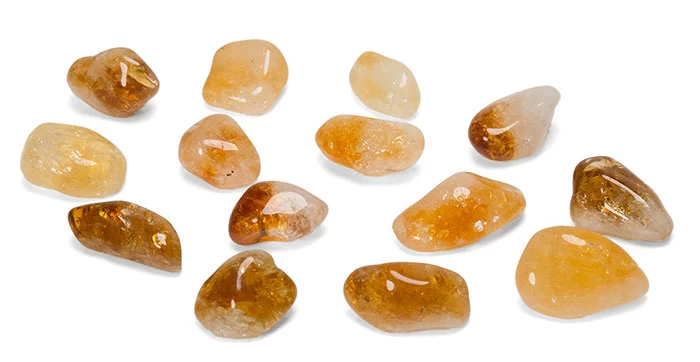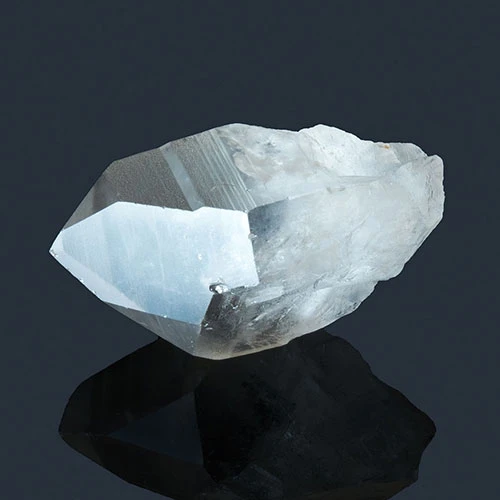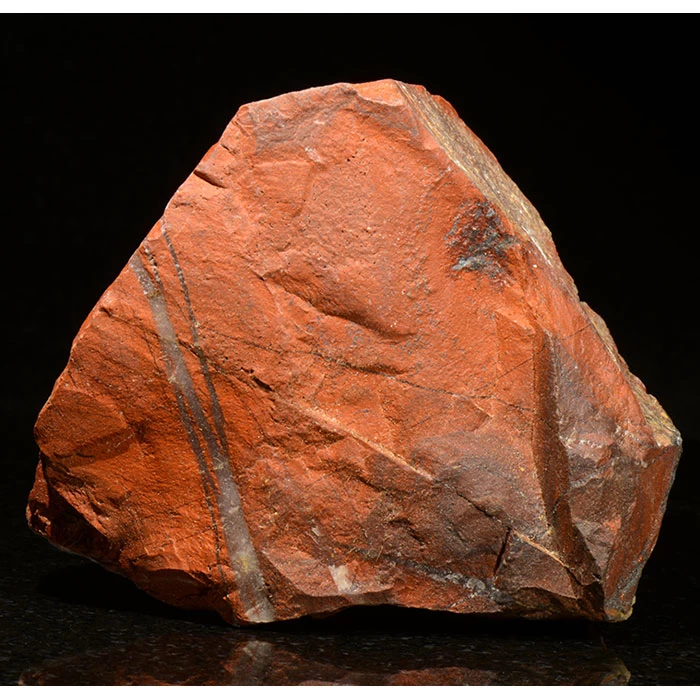Natural Citrine or Heated Amethyst?

How to Tell Real Citrine from Heated Amethyst
People are often surprised to learn that real citrine is a relatively rare mineral. Named after the French word 'citron', meaning 'lemon', citrine is a yellow variety of quartz.
Most commercial-grade citrine being sold around the world is heated amethyst. Brazil is the largest producer of heated amethyst and real citrine.
Throughout history, anything rare or highly sought after has been copied. With the advancement of technology, it's now possible to copy virtually anything.
Rocks and minerals have been imitated for thousands of years. Turquoise is believed to be the first mineral to have been copied. Fake turquoise has been found in ancient Egyptian tombs.
The ancient Greek philosopher Theophrastus noted that many stones change colour when heated. He subsequently classified them according to how they reacted to fire.
Ancient Roman author and naturalist Pliny the Elder also noted the effects of heat on stones. In his encyclopaedia, Naturalis Historia, he wrote, "One gemstone can be changed into another." He also stated that the colour of quartz could be changed into that of an emerald.
Heating Stones to Alter Colour
When amethyst is heated to 450°C (842°F), it turns yellow. Increase the temperature, and it turns orange and then orange-brown. The final colour is determined by temperature and how long the crystals are heated. This is how heated amethyst citrine is produced.
Exposure to heat changes the chemical composition of amethyst, gradually reducing the amount of iron. Impurities of iron are the primary reason for its purple colour.
Heat is often used to enhance or alter the colour of many minerals. It can also remove unwanted characteristics, such as wisps of colour.
Although blue topaz does occur naturally, it's extremely rare. Natural blue topaz bears little resemblance to the popular Sky, London, and Swiss Blue gemstones created through various heat treatments.
Most of the world's finest rubies and sapphires are heated. A ruby that's not been heated is extremely rare.
Aquamarine is also commonly heated to turn stones with a greener colour to a purer shade of blue.
Despite heat treatments being an accepted enhancement, attitudes towards heated amethyst citrine seem to be shifting.  Because real citrine is relatively rare, it tends to be quite expensive. For this reason, heated amethyst has long been accepted as the next best thing.
Because real citrine is relatively rare, it tends to be quite expensive. For this reason, heated amethyst has long been accepted as the next best thing.
Heat changes a stone's colour by interfering with its chemical composition. The process is similar to what happens in nature over millions of years.
Agate and onyx are often dyed to make less interesting colours more desirable.
Real Citrine: What to Look For
Although there are exceptions, real citrine is usually relatively easy to identify. One thing worth remembering is that due to its rarity, most citrine is heated amethyst.
One of the most obvious clues when trying to distinguish one from the other is the presence of white or colourless quartz. In rough heated amethyst citrine, this will be visible towards the base of the crystal.
Colour-zoning is another typical characteristic of amethyst that remains visible even after a stone has been heated. This is particularly useful when trying to determine if a polished stone is real citrine or heated amethyst.
Colour is one of the easiest ways to identify 'fake' citrine because crystals often have a rich, almost burnt-orange appearance. This is more noticeable in lower-grade stones or material that has been poorly produced.  Natural citrine can vary from pale to light yellow, golden yellow to orange, and deep yellow to almost brown. Low-grade citrine, whose colour tends to be very subtle, is far more abundant and less expensive than stones with more saturated and uniform colour.
Natural citrine can vary from pale to light yellow, golden yellow to orange, and deep yellow to almost brown. Low-grade citrine, whose colour tends to be very subtle, is far more abundant and less expensive than stones with more saturated and uniform colour.
Another clue for identifying real citrine is dichroism. Dichroism is a phenomenon whereby the colour of a crystal changes depending on the angle from which it absorbs light. Citrine is dichroic, but amethyst is not.
The test is not always conclusive because some citrine is only slightly dichroic. Furthermore, smoky quartz and some other quartz varieties can also be used to mimic the colour of genuine citrine. Once heated, they can also be dichroic.
Testing a stone for dichroism may confirm it's not heated amethyst, but there's no guarantee it's natural citrine. This test is not easy to carry out unless you know exactly what to look for.
Another significant difference is that amethyst is pleochroic. Minerals that exhibit pleochroism display different colours when viewed from different directions.
As a last resort, you could try heating citrine to establish whether it is genuine. Natural citrine fades when heated, but the problem with this test is that there's a 50/50 chance you'll ruin what may be genuine stone.
What's in a Name?
The main issue with heated amethyst citrine is that some people feel cheated.
In the business of rocks, minerals and gemstones, heating and dyeing stones is relatively common. However, heating a stone to alter its colour is not the same as being dyed.
Dyed agate or chalcedony is often sold as black onyx. Most coloured or banded 'onyx' is calcite. White or colourless topaz is irradiated to produce blue topaz, and lemon quartz is created by heating amethyst or pale citrine.
Smoky quartz can also be replicated by heating clear quartz or low-grade citrine.
The use of trade names also causes so much confusion because they can be extremely misleading with regard to a stone's chemical composition.
I have often wondered whether it would be more appropriate to call heated amethyst citrine yellow quartz, but that presents a whole new set of challenges. Yellow quartz is natural citrine, just as purple quartz is amethyst.
Since the 4th century BC, amethyst has been synonymous with naturally occurring violet-to-purple-coloured quartz. Therefore, quartz crystals in any other colour cannot be labelled as amethyst.
A relatively new material discovered in Patagonia in Argentina has been named pink amethyst. The name is contentious and tends to be used mainly by those whose interest in rocks and minerals is metaphysical. Some argue it should be called pink quartz, but that's also problematic.
Some argue it should be called pink quartz, but that's also problematic.
Rose quartz is the pink variety of the mineral quartz, but there's another type of rose quartz often referred to as pink quartz. This material is far more scarce and has a slightly different chemical composition.
Pink quartz fades when exposed to sunlight and also forms individual crystals. The colour of rose quartz is stable, and its crystal habit is massive. This means crystals form one large intergrown mass with no external shape or structure. Individual crystals in rose quartz have never been found.
Different types of quartz have different names because their chemical composition varies, often due to impurities. An impurity is not the same as an inclusion.
The material known as pink amethyst has a slightly different composition from amethyst, rose quartz and the variety known as pink quartz.
Prasiolite is a rare green variety of quartz. Most commercial-grade prasiolite, which is heated amethyst, is sold as green amethyst. Amethyst cannot be green.
Something else to be aware of is real citrine rarely occurs as a geode. The citrine geodes being sold commercially are amethyst geodes that have been heated in industrial-sized ovens.
Note the burnt-orange colour of the crystals in this 'citrine geode'. 
What is Madeira Quartz?
I believe Madeira quartz is a trade name that has recently been introduced. It's clearly been taken from Madeira citrine.
Madeira citrine is a trade name for natural citrine with a deep saturated colour. The finest stones are rich golden-reddish-brown. The name comes from the Portuguese fortified wine from Madeira because of the similarity in colour.
I have, however, recently seen the name being used to describe darker-coloured heated amethyst citrine.
Although some people shy away from heated amethyst citrine, its production serves a purpose because it allows consumers to purchase a similar-looking stone at a more affordable price.
Buying this type of citrine can also be a more sustainable option because of the rarity of real citrine. When demand is high for a mineral, there's a significant risk of it being over-mined. Ocean Jasper is a prime example.
Despite heated amethyst often being labelled as 'fake' citrine, it's important to remember that it is a natural mineral. When produced well, it can actually be very nice.
Heated amethyst citrine tumbled stones can be exceptionally colourful and often exhibit subtle iridescence.
With regard to fine-grade gemstones, the skill and expertise required to cut and polish remain the same whether it's amethyst or citrine. With both being varieties of quartz, their hardness is the same.
Is Heated Amethyst Fake Citrine?
Terminology is important when describing heated amethyst. Although often referred to as 'fake' or 'imitation' citrine, neither word is particularly appropriate. For this reason, I prefer to use the term 'heated amethyst citrine.'Few retailers refer to heated amethyst as anything other than 'citrine' because it's widely accepted as an alternative to natural citrine.
In my mind, the words 'fake' or 'imitation' describe something made from glass, resin, or some other man-made material, not a natural stone that's been heated.
The term 'heat-treated citrine' is sometimes used but can be misleading because natural citrine can also be heated to enhance its colour.
The term 'baked' or 'cooked' amethyst is widely used in North America.
The tumbled stones in our final two photos are natural citrine. The darker stones come from the Democratic Republic of Congo, and the lighter stones are from Zambia.


Article Photos
The heated amethyst citrine tumbled stones at the top of our article and the three rough 'citrine' crystals are from our collection.
The retailer holding a handful of "natural untreated rough, fine grade citrine crystals" comes from a listing on a popular online marketplace.
The pink amethyst geodes are courtesy of Bob Harman (FMF Minerals Forum). The photo is clickable and redirects to the original image, which is worth seeing.
The citrine geode is being sold by a business in the UK.
The heated amethyst citrine faceted gemstone and real citrine tumbled stones are from our collection.
The minerals in the pop-up photos are also from our collection.















